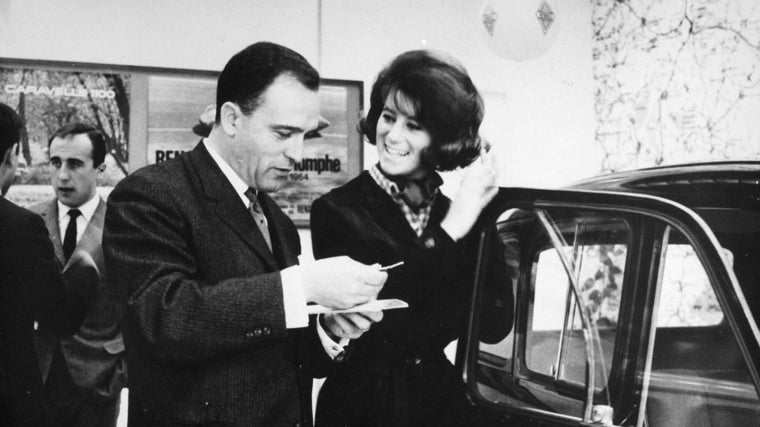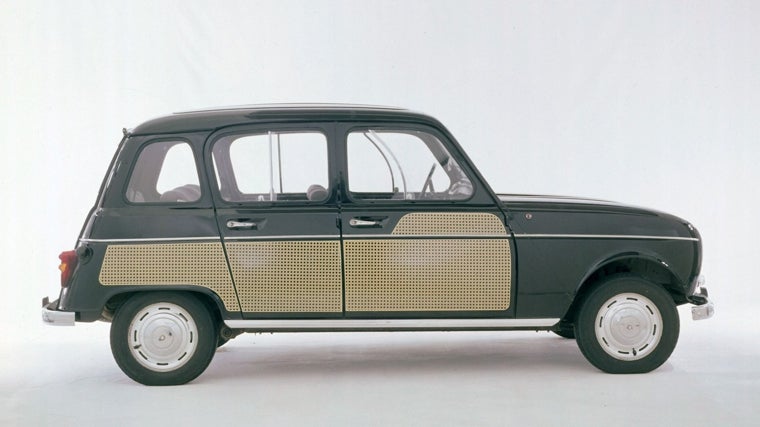Renault 4 Parisienne, too beautiful to work

Economy, practicality, versatility, the ability to adapt to any load, any use. The Renault 4 wasn't born out of nowhere. Citroën had a 2CV that followed the same principles. Renault was inspired by the double-chevron model, but there were no external similarities: ruggedness, spacious interior, front-wheel drive, long-travel suspension that allowed it to handle very poor roads... and a minimal maintenance budget.
With a powerful engine, we're talking about its launch in 1961, the Renault soon conquered rural areas. In 1962, more than 200,000 Renault 3 and 4 were sold.
But in the cities it was a different story: its utilitarian, rustic appearance did not appeal to an urban audience, and even less so to women.
And that's when Renault launched an original idea: from March 8 to July 15, 1963, four thousand two hundred readers of the magazine "ELLE" were invited to test the 4L for two days.
For the operation, dubbed "Elle prend le volant" ("She takes the wheel"), half a thousand Renault 4 "Super" cars will be transformed into the R4 Parisienne: a name chosen to reflect the internationally renowned good taste of Parisian women, according to Renault. Nearly six thousand female drivers will test drive the car, both in Paris and in the provinces. To give it a more "chic" touch, the R4 was adorned with black paint and, at a choice, a yellow imitation wicker (hand-painted) inspired by some cars from the 1920s and 1930s, or a tartan pattern (green or red) with a Scottish connotation.
 Sheila next to the R4 Parisienne
GS
Sheila next to the R4 Parisienne
GS
The famous singer Sheila, then a young rising star of French chanson, was part of the operation and became the image of Parisian women. Ironically, she didn't even have a driver's license yet. She passed the test the following year (at a R4 driving school), and her producer then offered her a genuine production Renault 4 Parisienne.
But back to our story. When returning the vehicles, readers were asked to indicate the car's strengths and weaknesses, as well as an overall opinion, positive or negative.
The enthusiasm was such that the decision was quickly made: the Parisienne would join the range from 1964. It was not a "special series" in the modern sense, but a model with its own personality within the Renault 4 range. The first 500 examples were reconditioned at Billancourt, either as the classic R4 Super or as the new Parisienne with subtle modifications.
 With the body decorated imitating wicker
FP
With the body decorated imitating wicker
FP
In the production version, the livery is less refined: it loses some tartan and wicker details, while the latter is now industrially painted (rather than by hand). However, it incorporates the "4 Parisienne" logo on the rear. It was launched in December 1963, powered by the 5 hp, 845 cc Billancourt R1123 engine. In fact, the tailgate is no longer decorated, the upper door trim is gone, and the grilles on the fenders and around the grille are no longer present.
The following year, the Parisienne was relaunched with a new color palette available: gray. Later, in 1966, the range was expanded with the introduction of the 747 cc 4CV R1120 engine. However, everything changed in terms of paintwork, as black and gray disappeared in favor of navy blue, dark green, and burgundy. Finally, in 1967, the interior changed slightly, notably with a new dashboard, and it was possible to order a Parisienne without braiding or tartan, no doubt to avoid attracting so much attention.
1968 was the Parisienne's last year on the market. Renault was preparing to launch a "leisure" version of the R4, intending to boost sales and win over female customers: the Plein Air replaced the Parisienne and went head-to-head with Citroën's Méhari. A failure that would go down in history. As we have seen, Renault would return to the elegant city car with the Supercinco Baccara, but it would not forget the Parisienne: thus, in Germany, a special edition of the Kangoo would adopt the Parisienne name and revive a body styled after the venerable R4.
It's impossible to know how many Parisiennes were built between 1963 and 1968. One thing is certain: they're rare and coveted today, especially when in good condition. In the realm of impossible missions, one could try to find an R4 Super Parisienne, one of the 500 launched, but it seems unlikely that it still exists.
Without a doubt, perfect for strolling under the heat of Paris.
ABC.es





